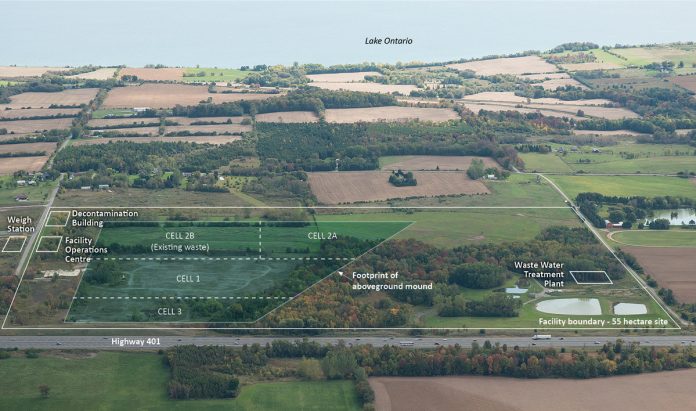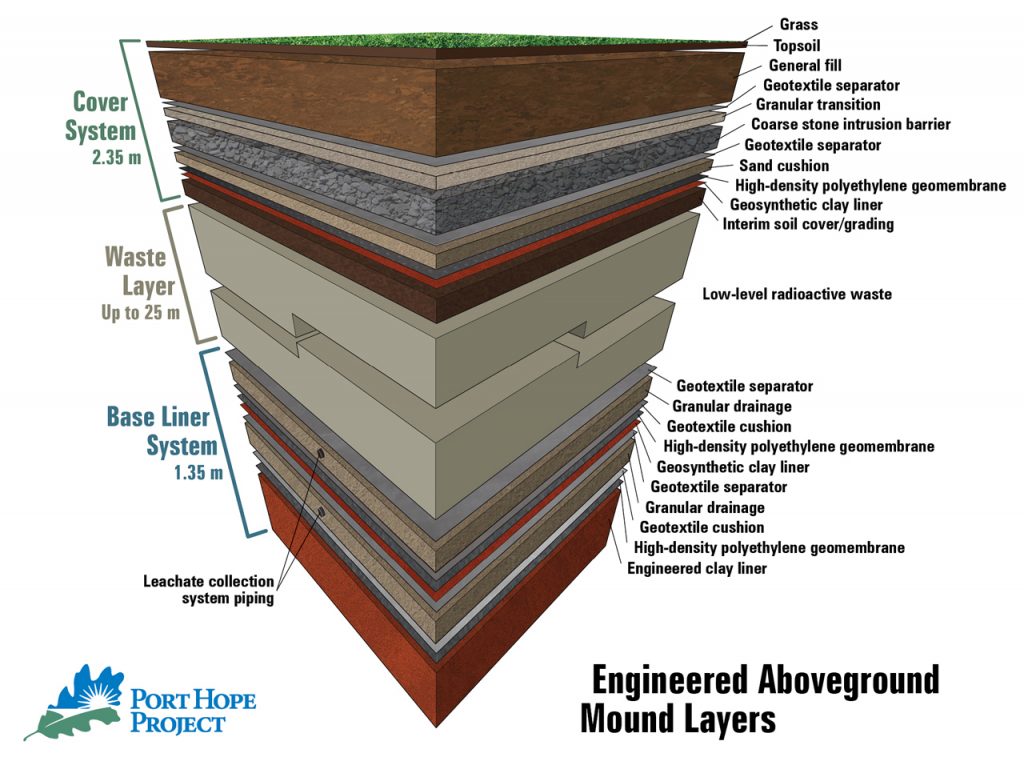
Canadian Nuclear Laboratories (CNL) has awarded the Port Hope Area Initiative (PHAI) contract to complete construction of the remaining storage cells at the Port Hope Project Long-Term Waste Management Facility. The contractor will also operate the facility during the upcoming cleanup of historic low-level radioactive waste in Port Hope, PHAI says in a news release.
The successful bidder, ECC/Quantum Murray, LP of Toronto, has extensive experience in environmental remediation work in North America, including construction of the first cell of the highly engineered aboveground mound at the Port Hope facility that will safely store waste from the cleanup of various sites in the community, the PHAI announcement says.
The project’s overall budget is slightly more than $1 billion.
“With the completion of Cell 1 scheduled this fall and the contract to operate the facility now in place, the site will be ready to receive waste, and remediation in Port Hope can begin early next year,” said Craig Hebert, general manager of the Historic Waste Program Management Office (formerly the PHAI Management Office).
Work to be completed under the contract, which is the largest that the PHAI will undertake, includes the construction of the three remaining storage cells designed to safely isolate low-level radioactive waste by encasing the waste with multi-layer base liner and surface cover systems.
The contractor will also complete the supporting infrastructure required at the site, including internal waste haul roads, vehicle portal monitors to measure radiation levels, and weigh scales to track waste volumes. A decontamination station will be built to ensure that trucks are free of contamination before leaving the site.
Under previous contracts, work completed at the long-term waste management facility included construction of a dedicated access road built to municipal standards, and an advanced technology waste water treatment plant that is discharging treated effluent to Lake Ontario that meets or exceeds all discharge criteria.
While work is underway, the prime contractor and all sub-contractors will adhere to stringent health and safety plans, as required by CNL under its Canadian Nuclear Safety Commission licence for the Port Hope Project. Contractor requirements for the protection of the public, workers and the environment include dust management, occupational health and safety, radiation protection and traffic safety plans.
“This work represents a significant milestone,” said Hebert. “We are committed to ensuring it is completed safely and efficiently to the benefit of the project and this community.”
PHAI is a federal environmental clean-up program. Its mandate is the remediation and local, long-term, safe management of historic low-level radioactive waste in Port Hope and the Port Granby area of Southeast Clarington. The Historic Waste Program Management Office, led by CNL, is implementing these projects on behalf of Atomic Energy of Canada Limited, a federal Crown corporation.
The Port Hope Project involves the construction of an engineered aboveground mound and supporting infrastructure for the safe, long-term management of approximately 1.2 million cubic metres of historic low-level radioactive waste, cleanup of the waste from various sites in Port Hope and its transportation to the waste management facility, located south of Highway 401 and west of Baulch Rd. Ongoing maintenance and monitoring will continue for hundreds of years after the facility is capped and closed. The historic waste resulted from radium and uranium refining and processing operations of the former Crown corporation, Eldorado Nuclear, and its private sector predecessors, which operated from the 1930s to 1988.

